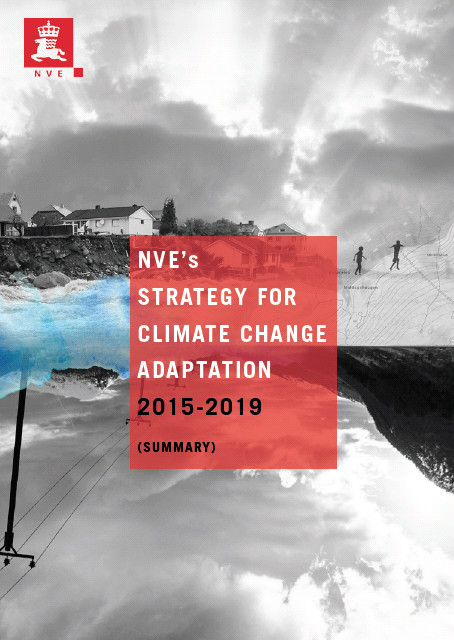The main climate and climate related changes that will affect our areas of responsibility
- Temperatures will increase, especially in the winter and in Northern Norway.
- The average annual precipitation will generally increase throughout most of the country. Whether there is an increase, no change or a slight decline will vary according to the season and region. There is uncertainty associated with the regional distribution.
- There will be more frequent local, extreme precipitation events, more rapid onset floods in small rivers and more flooding in densely populated and urban areas.
- River flow in the winter months will generally increase, while river flow in the summer months will generally decrease.
- Flood probabilities in the autumn and winter, and flood magnitudes caused by rain will generally increase.
- Snowmelt floods will gradually decrease.
- More summer droughts are expected (less soil moisture and lower ground water levels, and longer periods of low flow in the rivers) mainly due to increased evapotranspiration.
- The sea level will rise along the entire coast, but will be offset to a varying degree by post-glacial rebound.
- The glacial areas will be reduced and glacial melt and discharge from the glaciers will increase in the short term but decrease in the long term as the glaciers melt away.
- The risk of dry snow avalanches will be reduced towards the end of the century, while the risk of wet snow avalanches and slush avalanches will increase in areas still covered by snow.
Climate change entails a need for continuous climate change adaptation in order to prevent unwanted incidents that may endanger human life and affect key infrastructure and societal functions. From an international perspective, Norway is well equipped to handle the direct effects of climate change. NVE has instruments that separately or in combination are suitable to reach the necessary climate adaptation within NVE’s areas of responsibility.
NVE conducted targeted climate change adaptation work in the period 2010–2014. The general awareness within NVE regarding climate challenges has increased, and relevant knowledge has been incorporated in guidelines and form letters. For example, how to take climate change into consideration is included in the Dam Safety Guidelines, particularly sensitive dams have been identified, and protection against flood and landslide hazards in a changing climate is discussed in the guideline «Flaum og skredfare i arealplanar» (Floods and landslides in land use plans).
The knowledge basis has been improved through updated hydrological projections and flood analyses, and the work related to a new version of Klima i Norge 21001 (Climate in Norway 2100) for the Norwegian Centre for Climate Services (NCCS).
Climate adaptation can include both physical measures and measures designed to produce sufficient knowledge about climate change to provide a sound foundation for decisions.
The rate of climate change will vary, and the impacts will be different throughout the country. NVE’s decisions have different time horizons. The climate adaptation strategy must reflect this, to enable NVE to act correctly at the right time. In order to do this, the strategy must be dynamic and adaptable to new knowledge.

